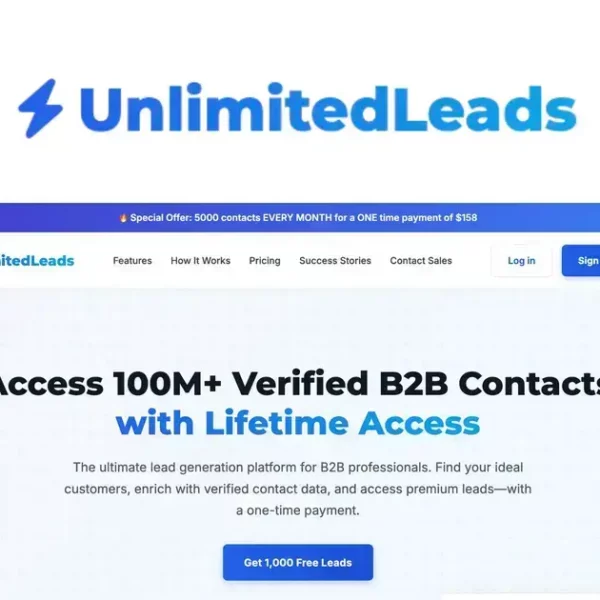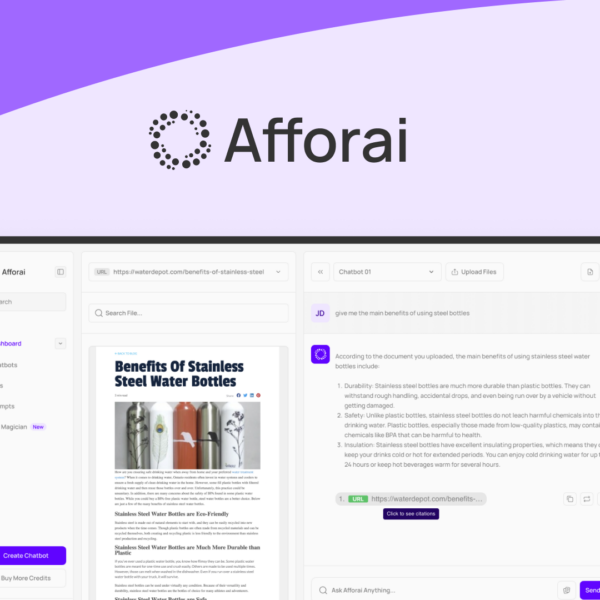Wondering how to make the most of your SaaS investments? You’re not alone! With so many options available, it’s crucial to know how to select lifetime deals that won’t let you down. Let’s explore the essential tips that can help you out!
Do Your Homework on the Developer and Company
Doing your homework on the developer and company is crucial when choosing a lifetime deal. You want to feel confident that they will stick around and support their product. Start by researching the company’s history. Have they been in business for a while? A solid track record can be a good sign.
Check Reviews and Testimonials
Look for reviews online. Real user experiences can tell you a lot about the product and the company. Try to find both positive and negative reviews. This gives you a balanced view. Don’t skip platforms like social media or forums either; they often have honest feedback.
Examine Their Team
Check out the team behind the product. Who are they? What’s their experience? Knowing the backgrounds of the founders or key team members can show you how well they can deliver. A skilled team often means a better product.
Investigate Their Support Channels
Look at how they handle customer support. Are they responsive? Good support is key, especially if you run into issues later on. Check if they have a dedicated support team or useful resources like FAQs and guides.
Assess Their Roadmap
Lastly, see if they have a product roadmap. This shows their plans for the future. A strong roadmap means they are committed to improving the product. It gives you peace of mind that you’re not investing in something stagnant.
Check Recent Feature Rollouts

Checking recent feature rollouts is a smart move before buying a lifetime deal. Developers often announce updates to show how committed they are to improving their product. Stay informed about what’s new. Updates can enhance your experience and add value to your investment.
Look for Release Notes
Most companies share release notes on their websites. These notes detail new features and fixes. Reading these can help you understand if the product is evolving. Regular updates are a good sign that the team is active and responsive to user needs.
Follow Social Media Updates
Follow the developer on social media. Many times, they share news about upcoming features or improvements there first. Engaging with them on social platforms also lets you see how they interact with users. This is important for gauging customer support habits.
Check User Feedback on New Features
Look at how users react to recent updates. User reviews can reveal if new features are well-received or if they come with problems. Honest feedback can help you decide if the updates are worth it.
Consider the Frequency of Updates
How often does the company roll out new features? A regular cadence of updates shows that the developers are committed to enhancing the product. If updates come infrequently, it might raise a red flag.
Evaluate Feature Requests
Some companies ask users for feedback on future features. Check if they respond to user demands. A company that listens to its customers is likely to create features that meet real needs. This is a great way to ensure the product keeps getting better.
Look at Their Roadmap
Looking at a company’s roadmap is vital when considering a lifetime deal. A roadmap shows you the future of the product. It outlines planned features and updates, helping you see where the product is headed.
Understand the Timeline
Check if the roadmap includes a timeline. Dates for releases can give you an idea of how quickly the team moves. Quick updates can mean more value for your investment.
Evaluate New Features
Look at the features planned for the future. Are they interesting and useful for your needs? If the roadmap includes features that really excite you, it might be worth your investment.
Assess User Feedback
Some companies include user feedback in their roadmaps. This shows they listen to their customers. If you see planned features based on user input, it’s a good sign they care.
Check for Transparency
Companies that freely share their roadmap are often more trustworthy. If they communicate openly about their plans, it shows they’re committed to their users. This transparency can give you peace of mind.
Consider Obsolescence
Keep in mind that a roadmap should keep the product fresh. If you see outdated features, it might be a red flag. You want software that evolves with changing user needs and technology trends.
Chat with Their Support

Chatting with a company’s support team can tell you a lot. It helps you see how responsive they are. Before buying a lifetime deal, take a moment to reach out and ask questions.
Ask Key Questions
Prepare a list of questions to ask. Inquire about features, support, and future updates. A good support team will be happy to provide clear answers. If they’re slow or vague, that can be a warning sign.
Test Their Response Time
Timing is key. Pay attention to how quickly they respond. Fast replies show they value their customers. A lack of timely responses might lead to frustrations down the line.
Get a Feel for Their Knowledge
During your chat, gauge their expertise. Ask detailed questions about the product. Support staff should have good knowledge of the features and how they work. Their ability to help you shows their commitment.
Explore Support Channels
Check out the support options they offer. Do they have live chat, email support, or a ticketing system? Multiple channels can make it easier to get the help you need, when you need it.
Look for User Reviews
See what other users say about their support experience. Reviews can give you insight into common issues. If many users report poor support, consider that carefully before your purchase.
Assess Current and Future Needs
Assessing your current and future needs is key when looking at lifetime deals. You want a product that fits now and grows with you later. Start by making a list of your needs.
Identify Your Current Needs
Think about what problems you need to solve today. Write down specific tasks that the software should help with. Clear goals will help you find the right solution.
Predict Future Requirements
While it’s hard to know the future, try to anticipate what you might need later. Will your team grow? Will you need more features? Picking software that can expand is important for long-term success.
Consider Integration
Check if the software can integrate with your existing tools. If it can’t, it might create more work for you. Easy integration saves time and keeps everything running smoothly.
Look for Customization Options
Customization can play a significant role in meeting your needs. Does the software allow you to tailor features? If it’s flexible, it can adapt as your business changes.
Revisit Your Needs Regularly
Your needs may change over time, so it’s wise to revisit them regularly. As your business grows, check if the software still meets your requirements. Staying aligned with your needs will help you get the most out of your investment.




